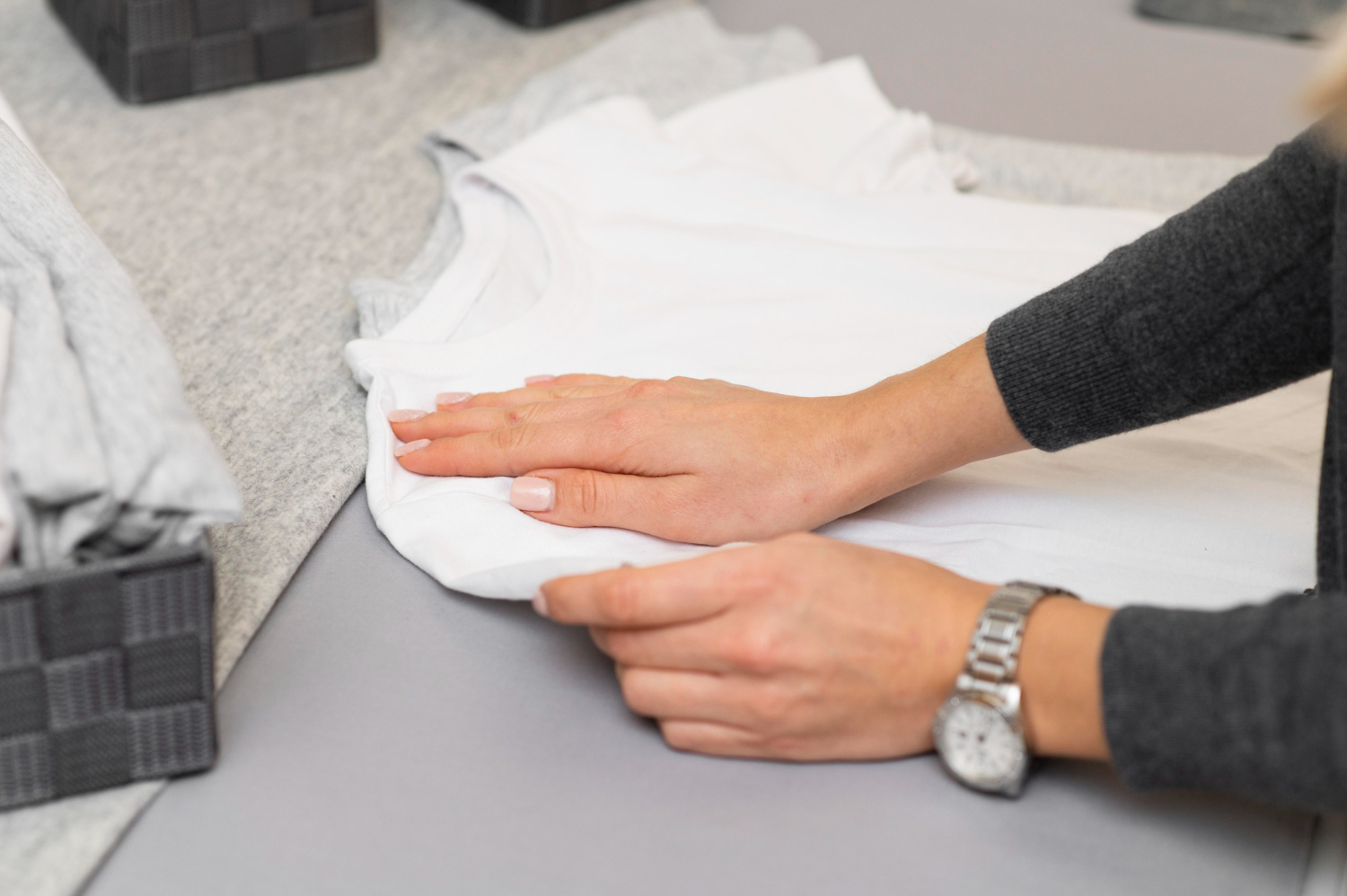How to get white out of clothes? White Out is a handy tool for correcting errors, but sometimes it ends up in places it shouldn’t be, like your clothing. The thought of having a white out stain on your favorite outfit can be distressing. However, with the right knowledge and quick action, you can effectively remove white out from your clothes without leaving a trace.
Understanding White Out Stains
Before delving into the removal process, it’s crucial to understand what white out is. White Out is a correction fluid that contains a thick, white pigment. It’s commonly used to cover mistakes on paper, but when it finds its way onto your clothing, it can be problematic.
What is White Out?
White Out, also known as correction fluid, is a liquid product used to correct errors on paper documents. It typically contains a white, opaque pigment in a fluid base. This pigment is what creates stubborn stains on your clothes when mishaps occur.
Common Causes of White Out Stains
Whiteout stains on clothes usually occur when the fluid accidentally drips or splatters onto your attire. Some common scenarios include a pen or pencil inadvertently touching the wet correction fluid, or an uncapped White Out applicator leaking.
Immediate Actions
How to get white out of clothes? When you notice a white out stain on your clothes, time is of the essence. Act quickly to prevent the stain from setting into the fabric permanently. Here are some immediate actions to take:
Blot and Scrape
Use a clean cloth or paper towel to blot the stain gently. Avoid rubbing the stain, as this can spread it further. Blotting helps absorb some of the excess correction fluid.
Avoid Rubbing
As mentioned, rubbing can worsen the situation. So, refrain from vigorous rubbing or scrubbing the stain. Instead, gently dab the area to prevent the stain from spreading.
Pre-Treatment Steps
Pre-treatment is the next stage. But, as various textiles demand different handling, it’s important to take into account the type of fabric your clothes is composed of before moving further.
Identifying the Fabric
Examine the clothing label to determine the fabric type. This information will guide your stain removal process. Fabrics like cotton, wool, silk, and synthetic materials may all require different approaches.
Precautions for Delicate Fabrics
If your clothing is made of delicate or sensitive materials, exercise caution. Delicate fabrics like silk or lace may require specialized care to avoid damaging the fibers.
Homemade vs. Commercial Stain Removers
When it comes to pre-treatment, you have options. Homemade solutions, like a mixture of dish soap and water, can work well for some fabrics. On the other hand, commercial stain removers are designed to handle a wide range of stains, including whiteouts.
Laundry and Washing
After the pre-treatment, it’s time to launder the stained clothing. This step requires attention to detail and the right washing techniques.
Appropriate Washing Instructions
Follow the care label instructions on your clothing for washing guidelines. Different fabrics have specific care requirements, such as temperature and cycle settings.
Temperature and Detergent Recommendations
Ensure that you use the appropriate water temperature and detergent. Typically, warm water and a quality laundry detergent work well for white out stains. Avoid using bleach, as it can damage both the fabric and the stain.
Stain Removal Methods
Now, let’s dive into specific stain removal methods. The effectiveness of these methods can vary depending on the fabric type and the freshness of the stain.
Effective Methods
Effective methods for white out stain removal include using solvents, mild detergents, and gentle scrubbing. The key is to be patient and persistent, especially if the stain has set in.
Solvents
Solvents like rubbing alcohol or acetone can be effective for removing white out stains. Apply the solvent to a clean cloth and blot the stain gently. Avoid pouring the solvent directly on the stain, as this can cause it to spread. Repeat the process until the stain is gone.
Mild Detergents
For less stubborn stains, a mixture of mild detergent and water can be effective. Apply the solution to the stain and gently rub the fabric together. Rinse with warm water and repeat if necessary.
Specifics for Different Fabric Types
Different fabrics require different approaches. For example:
- Cotton and Polyester: These fabrics can often handle more robust stain removal methods. Use a mixture of water and mild detergent or a solvent like rubbing alcohol.
- Silk and Wool: Delicate fabrics like silk and wool require more gentle handling. Use a mild detergent and avoid aggressive scrubbing, which can damage the fibers.
- Synthetic Materials: Fabrics like polyester and nylon typically respond well to stain removal methods designed for cotton.
The Importance of Spot Testing
Do a spot test on a hidden section of the fabric before using any stain removal techniques to be sure they won’t cause any more harm. By taking this care, you can prevent unexpected effects for your clothes.
Stain Removal Alternatives
How to get white out of clothes? If you prefer to use household items for stain removal or want to explore eco-friendly options, there are alternatives to consider.
Using Household Items
Household items like vinegar, dish soap, and baking soda can be surprisingly effective in stain removal. These items are often readily available and can work well for mild to moderate white out stains.
Vinegar and Dish Soap
Mix one part vinegar with two parts water and add a few drops of dish soap. Apply this solution to the stain, then gently blot and rinse.
Baking Soda Paste
Combine a tiny amount of water with baking soda to make a paste. After applying the paste to the stain, give it a 15 to 30-minute rest. Use warm water to rinse.
Eco-Friendly Stain Removal
Those who care about the environment can choose stain removers that are safe for the environment and their clothes. Plant-based components and biodegradable packaging are common features of these goods.
Prevention and Tips
While knowing how to remove white out stains is essential, prevention is the best approach. Here are some tips to avoid future mishaps:
Preventing Future Mishaps
Learn to use white out more carefully to avoid accidents. Keep correction fluid containers tightly closed when not in use and avoid vigorous shaking.
Proper Storage and Usage
Storing your white out correctly and using it as directed can help prevent spills and stains in the first place. Store correction fluid upright to prevent leakage.
How to Handle Multiple Types of Fabrics
If you have a diverse wardrobe with different fabric types, it’s essential to familiarize yourself with the care requirements of each. Some fabrics may be more forgiving than others when it comes to stain removal.
Professional Cleaning as a Last Resort
If all else fails and the stain remains stubborn, consider professional cleaning. Dry cleaners have the expertise and tools to deal with challenging stains, including those caused by White Out. However, it’s advisable to exhaust your options at home first.
Additional Tips for How to Get White Out of Clothes
Dealing with Fresh vs. Dried Stains
Fresh white out stains are easier to remove than dried ones. If you notice the stain quickly, act immediately. For dried stains, it may take more effort and multiple attempts to remove the stain completely.
Multiple Rounds of Stain Removal
Don’t be discouraged if the stain doesn’t disappear after the first attempt. Stain removal often requires several rounds of treatment, especially for older or set-in stains. Be patient and persistent.
Avoid Heat
Avoid using hot water or heat sources like hairdryers on white out stains, as heat can set the stain permanently. Stick to lukewarm water when washing the stained clothing.
Don’t Overload the Washing Machine
When laundering the stained clothing, don’t overload the washing machine. This ensures that the fabric can move freely, allowing the detergent to work more effectively on the stain.
The Role of Time and Patience
Conclusion
In summary, knowing how to get white out of clothes is a valuable skill. Accidents happen, but with quick action, the right techniques, and a bit of patience, you can restore your clothing to its former glory. Don’t let a white out stain ruin your day!
Frequently Asked Questions
Q: Can I use bleach to remove white out stains?
A: Using bleach can be risky, as it may damage your clothing. It’s safer to follow the recommended stain removal methods.
Q: What should I do if I notice the stain later after it has dried?
A: Act as quickly as possible, but even dried white out stains can often be removed with the right techniques. Be patient and persistent.
Q: Are there any fabrics that are particularly difficult to clean white out from?
A: Delicate fabrics like silk and lace may require extra care and attention, but it’s still possible to remove white out stains from them.
Q: Do I need to hire a professional cleaner for stubborn white out stains?
A: In most cases, you can successfully remove white out stains at home. However, if you’re unsure or the stain is particularly stubborn, consulting a professional cleaner may be a good option.
Q: Can white out stain removal damage my clothing?
A: When following the recommended methods and being cautious with delicate fabrics, the risk of damaging your clothing is minimal. Always perform a spot test before proceeding.
Check Out Added Pieces: How to Get Poop Smell Out of Clothes



